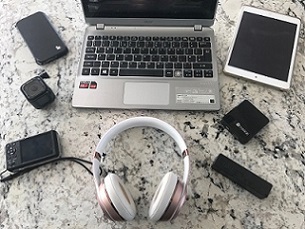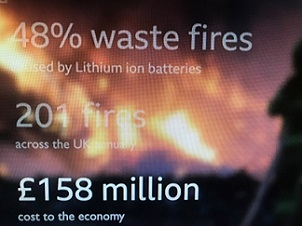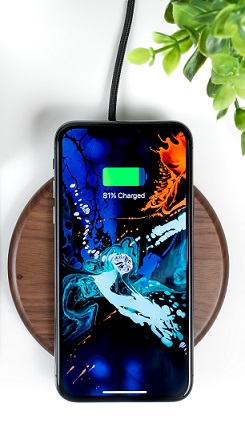 All these everyday personal electronic items are powered by lithium batteries
All these everyday personal electronic items are powered by lithium batteries
 A huge number of fires in waste centres are sparked by lithium batteries
A huge number of fires in waste centres are sparked by lithium batteries
 A pilot with an AvSax fire mitigation bag
A pilot with an AvSax fire mitigation bag
 Think very carefully how and where you charge your mobile phone or any other personal electronic device
Think very carefully how and where you charge your mobile phone or any other personal electronic device
Lithium battery fires are getting more and more common to here’s the definitive and ultimate guide to keeping you as safe as possible,
All our everyday personal electronic devices such as mobile phones, laptops, iPads and e-cigarettes are powered by lithium batteries.
But so are scooters and wheelchairs and all lithium batteries have the potential to overheat, catch fire and even explode. If it’s in your mobile phone or e-cigarette it can literally be a rocket in your pocket.
This is known as thermal runaway and happens when one cell in a battery overheats it can produce enough heat – up to 900°C (1652°F) – to cause adjacent cells to overheat. This can cause a lithium battery fire to flare repeatedly and they are then very difficult to put out due to their intensely high temperatures.
Major cities around the world including London and New York have had serious fires caused by lithium batteries overheating on e-scooters and e-bikes. Many have been left in communal exits in flats which have made it very difficult for people to escape once the fire has taken hold.
Firefighters in Michigan recently rescued two people from an apartment fire caused by an electronic wheelchair battery that went up in flames in an assisted living complex.
The electronic wheelchair’s lithium-ion battery was charging when it caught fire.
Fire Chief Mike Kennedy said: “This had thermal runaway and when these take off it has explosive gas. Basically, this created a jet of flame that set the chair on fire and also set the apartment on fire.”
The last place you want this to happen is in the confined space of an aircraft which is why many airline operators now carry lithium battery fire containment bags on board.
The world’s best-selling fire containment bag for personal electronic devices on aircraft is the award-winning AvSax (www.avsax.com) which are now on more than 16,770 aircraft operated by over 100 airline companies. They have been used 33 times to deal with emergencies since the start of 2017.
AvSax won the prestigious Queen’s Award for Enterprise in the UK in 2018, the highest award any business in the UK can get for innovation and the company that devised it, Environmental Defence Systems Ltd based in Yorkshire, England, is looking to use the technology in places such as recycling centres which have a lot of fires caused by lithium batteries.
So here the main reasons lithium-ion batteries can catch fire and the definitive guide on what you can do to prevent it from happing.